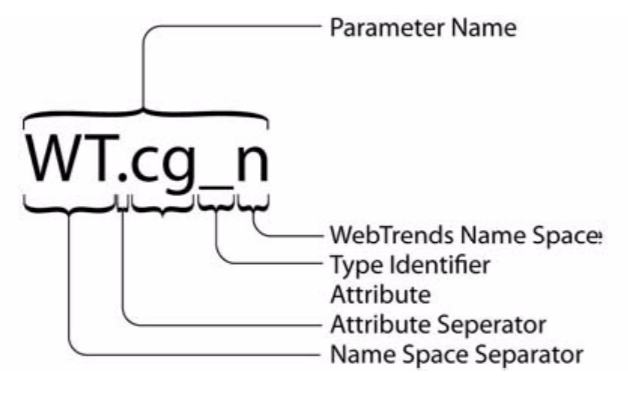Web analytics is about making business sense out of web visitor behavior – the same common-sense analysis that business professionals have been applying to traditional offline business for decades. Gaining the appropriate insight to enable your organization to make smarter business decisions means understanding your site’s business objectives and determining the appropriate web metrics to provide that information.
Today’s business environment typically involves working at remote and off-site locations. Consequently, the people responsible for the web site and those analyzing visitor activity on the web site to measure web metrics often do not work side-by-side. That is, they are frequently in different groups and locations. This situation necessitates coordination between developing and delivering content, and reporting and analyzing the activity results.
To facilitate interaction between departments, locations and individuals, Webtrends provides a feature designed to place the power of analysis into the hands of those individuals who are most interested in it. This feature, Webtrends query parameters, uses typical web site instrumentation to facilitate the analytics end-users want to see.
How Webtrends Query Parameters Work
By implementing Webtrends query parameters when designing your web site, reporting becomes a part of the web site design process, eliminating the considerable coordination required and reducing the misunderstandings that can happen when the objectives of many groups are at play. Webtrends query parameters are passed in URLs through JavaScript, captured in SmartSource Data Collector log files, and ultimately used by Webtrends Analytics software or Webtrends Analytics On Demand. Webtrends Analytics uses these parameters to analyze your web activity and to produce reports.
Using Webtrends Query Parameters
If one of your goals is to limit the amount of manual intervention that is required to produce valuable reports, you can implement Webtrends query parameters in your web pages to automate the configuration of many features in Webtrends Analytics, making the Webtrends solutions more insightful with reduced effort.
For example, you can use Webtrends query parameters in HTML META tags to automatically configure page titles, product names and product information, or campaign names. You could also implement a custom “Campaign Submission” page in a company intranet that sends the Webtrends query parameter to automatically configure Webtrends Analytics to report on new campaigns, allowing you to spend less time on system configuration.
Products Using Webtrends Query Parameters
The following Webtrends products take advantage of Webtrends query parameters:
- Webtrends Analytics 9
- Webtrends Analytics X
- Webtrends Visitor Data Mart
- Webtrends Analytics OnPremises
- SmartSource Data Collector
- Webtrends Mobile SDK for Android, BlackBerry, iOS and Windows Phone
Query Parameter Syntax
Webtrends query parameters follow specific syntax that includes name, value, and format. The following sections describe each of these syntax elements
Name Syntax
The name of each Webtrends query parameter uses the following syntax:

Although Webtrends Analytics handles query parameter names without considering case, JavaScript object names are case-sensitive. Therefore, if you want JavaScript tagging to capture events, you must adhere to specified naming conventions. Webtrends reserved query parameters require an upper case name space, either WT or DCS, and the type identifier in lower case. In addition to the query parameters covered in this chapter, the following name spaces are reserved for Webtrends:
WT.i_
Used for product integrations with Webtrends partners
WT.z_
Used by Webtrends Professional Services for customer integrations
As a best practice, use the following syntax to create custom query parameters:
DCSext.w_custom_identifier
For example, you could create a parameter called DCSext.w_articleid to track an article ID.
Value Syntax
The values associated with Webtrends query parameters use the following syntax:

Each Webtrends query parameter name may have one or more values. Some parameters can be specified in pairs or in groups of related parameters. When related parameters have multiple values, these values may be correlated and their position becomes important as shown in the following example:
WT.si_n=name1;name2&WT.si_x=position1;position2.
In the previous example, if correlation is specified in the report, name1 is associated with position1and name2 with position2.
If there are multiple values, they are typically separated using a semicolon (;). You can use other separators, but you must specify the separator in the dimension or measure setting that is based on the parameter.
Not all Webtrends query parameters support multiple values. For example, HTML Title Page allows only one value.
If the parameter value contains a semicolon, it must be hex-encoded (“%3B”) to differentiate it from the separator.
Numerical Value Format
Unless stated otherwise, numerical values must be specified using the simple US format using the period as the decimal separator with up to 2 decimals and without thousand separators. For example, 12345.67.
Complete Syntax
The Webtrends query parameters are represented as name/value pairs. The name/value pairs adhere to the following syntax:

The Webtrends query parameters are logged in SmartSource Data Collector log files. Each name/value pair is separated by an ampersand (&). The Webtrends query parameters must co-exist with other web site well-known parameters. This means that Webtrends query parameters can be mixed with standard well-known parameters. The Webtrends query parameters can be separated from the other well-known parameters using the ampersand delimiter. While a Webtrends namespace is part of each query parameter, it is conceivable that parameter collisions may occur. If a query parameter string contains duplicate key values, the first instance is used and the others are discarded.
Syntax Examples
Single Parameter With a Single Value
The following example shows a page associated with the “Finance Offer” advertising view:
WT.ad=Finance%20Offer
Single Parameter With Multiple Values
The following example shows a page associated with both the “Finance Offer” and “FishFinder Offer” advertising views:
WT.ad=Finance%20Offer;FishFinder%20Offer
Related Parameters With a Single Value
The following example shows a page associated with the Campaign “New Product” and the Campaign Event Type “click":
WT.mc_id=New%20Product&WT.mc_ev=click
Related Parameters With Multiple Values
The following example shows a page associated with content groups and sub-types. The sub-type “pressre-leases” is associated with the “corporate” content group, while the sub-type“specifications” is associated with the “engineering” content group:
WT.cg_n=corporate;engineering&WT.cg_s=pressreleases;specifications